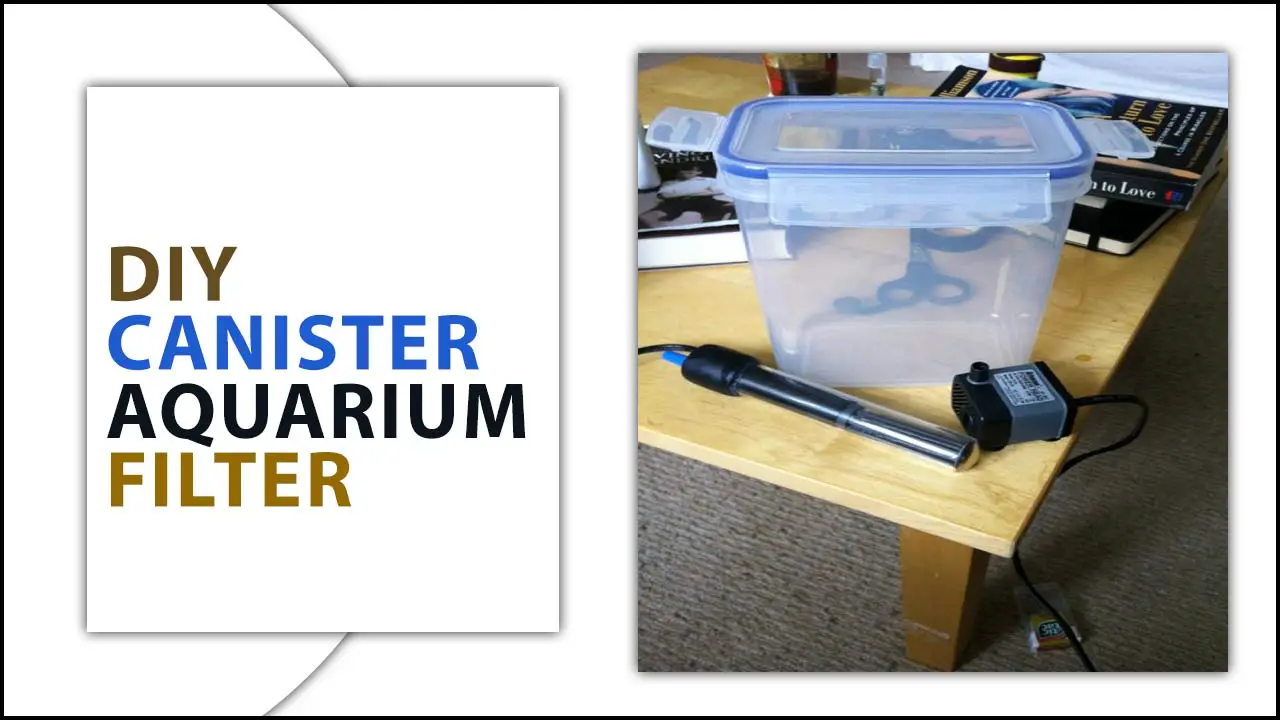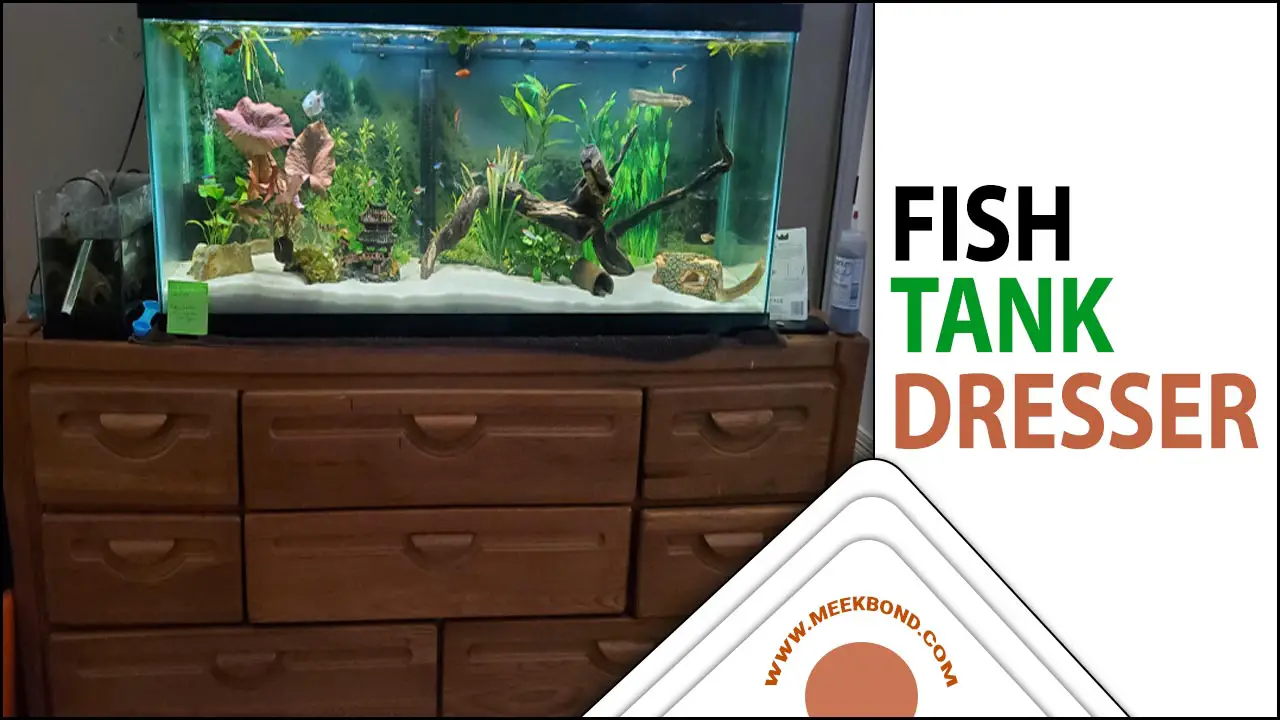A seed shrimp aquarium is a fascinating and unique way to explore the world of aquatic life. Seed shrimp, or ostracods, are tiny crustaceans that can be kept in a small aquarium or container.
Here we will cover everything you need to know about caring for your seed shrimp -aquarium. Understanding seed shrimp’s natural habitat and lifecycle is crucial to their proper care. We will also discuss their diet, common food sources, and how they can become a pest infestation in your aquarium.
You will learn about preventive measures against seed shrimp infestations and effective methods for eradicating them from your tank. We will also explore potential risks to plants from seed shrimp and how they impact other aquatic life, including their predators. By the end of this post, you’ll have all the information you need to master your seed shrimp- aquarium.
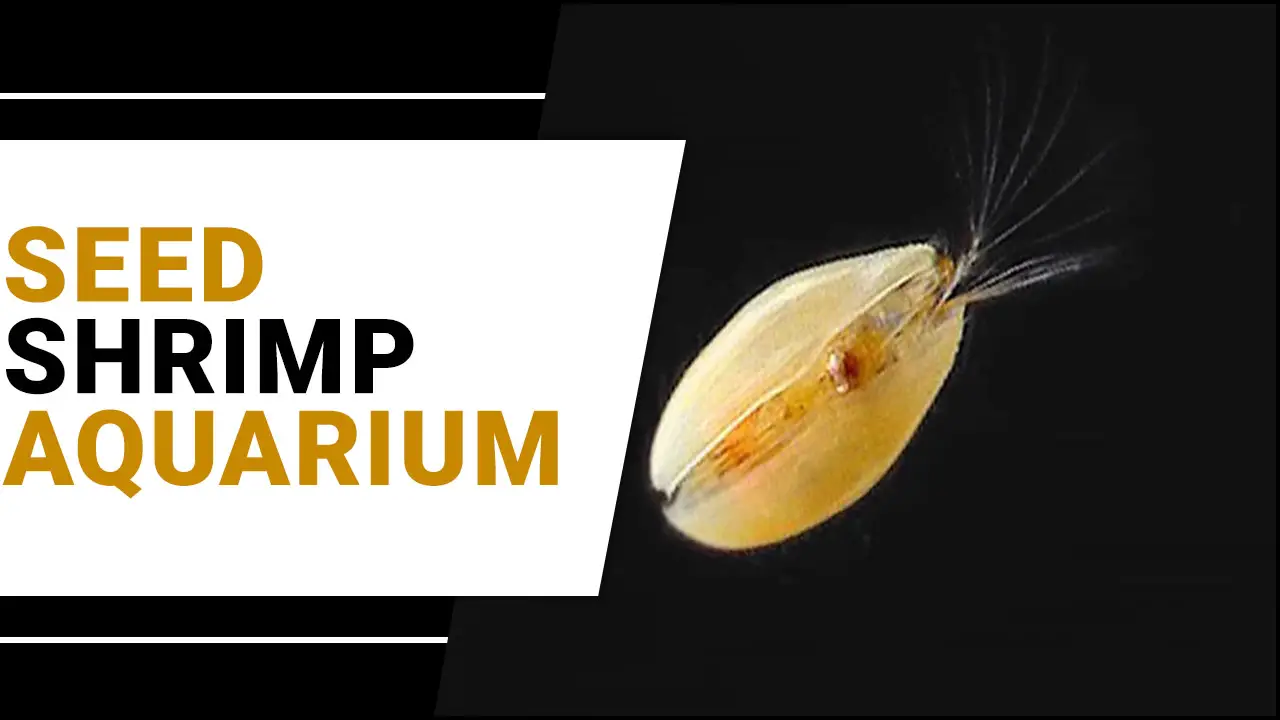
Seed Shrimp Aquarium: Essential Care And Maintenance
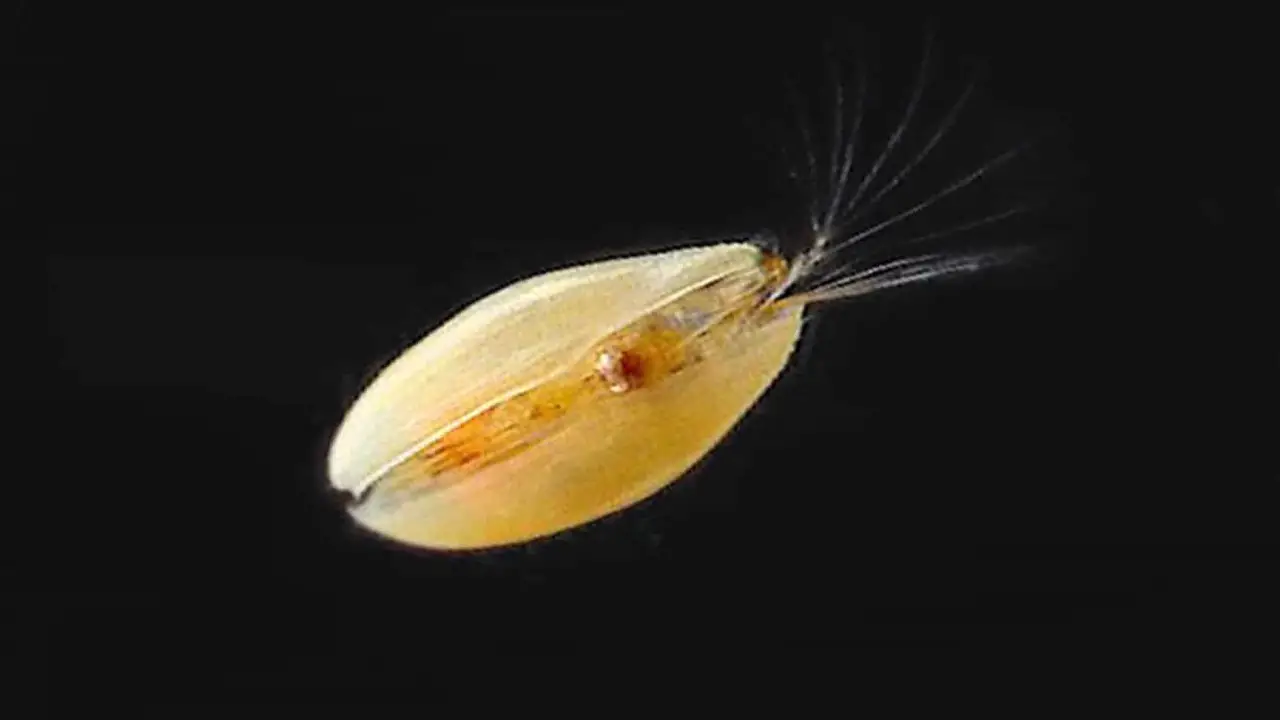
Maintaining a seed shrimp aquarium requires essential care and maintenance. Regularly test and maintain the appropriate water parameters to ensure optimal water quality for the seed shrimp. To support their growth, provide a balanced diet of algae, bacteria, and microorganisms.
The tank size should be chosen based on the number of seed shrimp and their growth potential. Adequate lighting is necessary for the shrimp to thrive. Cleaning the tank and equipment regularly prevents harmful substance buildup and maintains a healthy environment for the seed shrimp. By following these care and maintenance practices, you can ensure the well-being of your seed shrimp population.
Some About Seed Shrimp
Seed shrimp, tiny crustaceans, play a crucial role in maintaining a healthy aquarium ecosystem. These small creatures help control algae growth and recycle nutrients by consuming organic waste. Seed shrimp are easy to care for and add to low-maintenance aquariums. However, proper water quality and temperature are essential to keeping a healthy seed shrimp population.
Regular feeding and monitoring of water parameters ensure long-term success. With their ability to consume detritus and leftover food particles, seed shrimp contribute to a balanced tank ecosystem. Understanding the importance of these fascinating creatures is the key to creating a thriving seed shrimp population.
The Natural Habitat Of Seed Shrimp
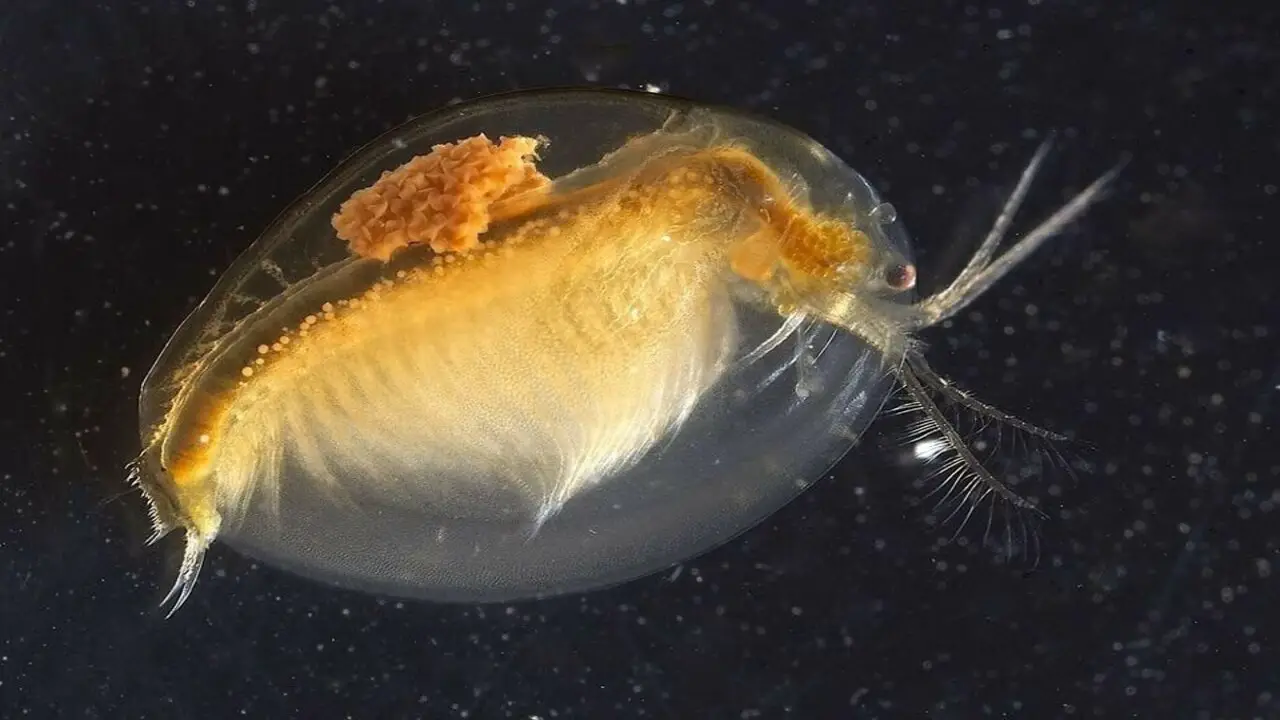
Seed shrimp, or ostracods, can be found in aquatic environments such as freshwater lakes, ponds, and saltwater. Understanding their natural habitat is crucial for properly maintaining your seed shrimp- aquarium. These crustaceans require a well-oxygenated and clean environment with a consistent temperature.
To mimic their natural habitat, it’s important to have proper filtration, regular water changes, and a balanced ecosystem in your aquarium. Providing adequate hiding spots and natural foods such as algae and biofilm can also enhance the health and well-being of your seed shrimp.
The Life Cycle Of Seed Shrimp
The life cycle of seed shrimp is relatively short, taking approximately 2-3 weeks for them to go from egg to adult. These tiny crustaceans reproduce at a high rate, and their offspring can be observed swimming freely in the aquarium.
Their diet mainly consists of algae and other microorganisms, which they filter from the water. To ensure the health and longevity of seed shrimp, it is crucial to maintain optimal water conditions, including pH, temperature, and oxygen levels. Regular water changes and adequate filtration are essential for their well-being and population control.
The Diet Of Seed Shrimp
Seed shrimp, or ostracods, are primarily filter feeders that rely on microscopic algae and bacteria for nutrition in their aquarium habitat. While their main diet consists of these natural sources, supplementing them with commercial shrimp food can help maintain their health and vitality.
However, avoiding overfeeding is important, as this can lead to water quality issues and harm the shrimp. A balanced natural and commercial food diet can result in healthier and more active seed shrimp. Experimenting with different types of food can help determine the optimal diet for your seed shrimp within your aquarium ecosystem.
Common Food Sources For Seed Shrimp
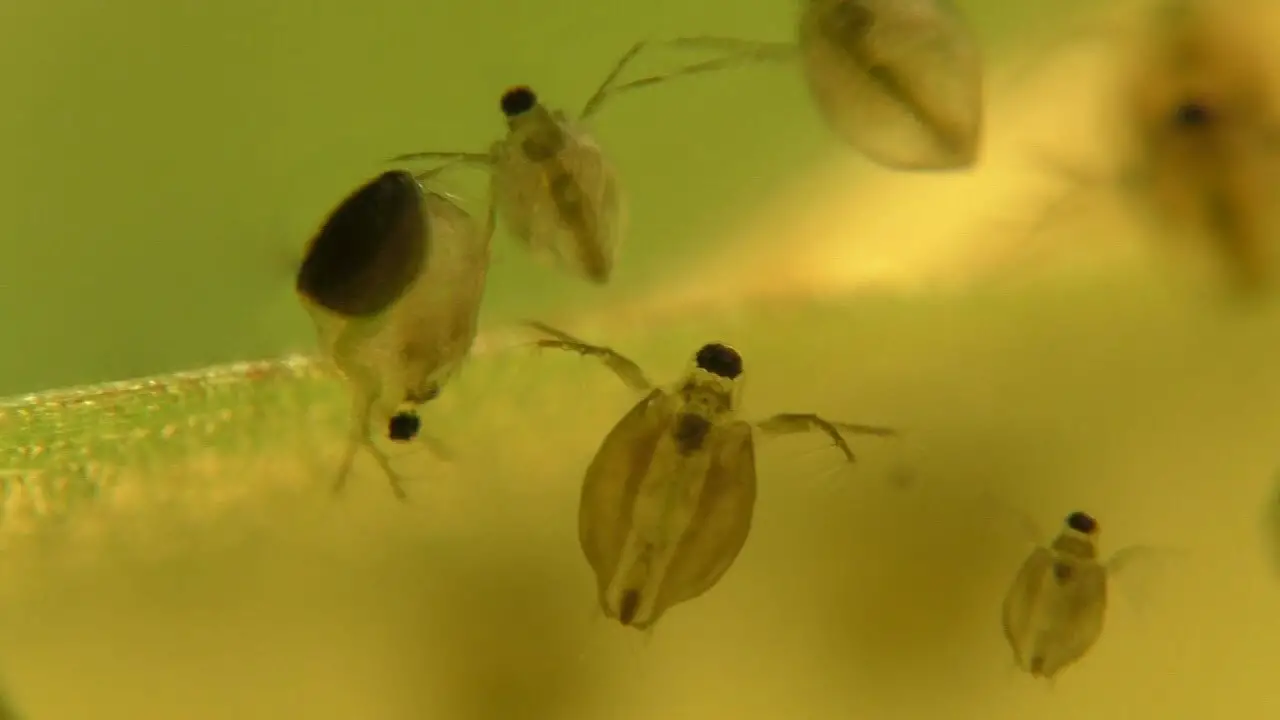
Seed shrimp have a diverse range of food sources. They can feed on algae, decaying plant matter, and bacteria, all of which provide essential nutrients for their growth and development. Additionally, commercially available shrimp food is an excellent option for ensuring that seed shrimp receive a balanced diet.
It’s important to note that overfeeding should be avoided as it can lead to excess waste and water pollution. Instead, small amounts of food should be provided frequently to maintain a healthy seed shrimp population. You can observe their feeding behavior closely to determine their specific dietary needs.
How Seed Shrimp Can Turn Into A Pest Infestation
Poor management of seed shrimp in an aquarium can result in them overpopulating and turning into a pest infestation. Overfeeding and poor water quality contribute to seed shrimp population explosions. To prevent this, regular water changes and proper feeding should be practiced.
Additionally, introducing predators like certain fish or snails can help control the seed shrimp population. Monitoring and adjusting the amount of food given to the aquarium is crucial to prevent overpopulation. By implementing these measures, you can ensure that seed shrimp do not become a nuisance in your aquarium.
Dealing With Seed Shrimp Infestations In Aquariums
Seed shrimp infestations in aquariums can occur due to overfeeding, poor water quality, or introducing infected plants or animals. It’s important to closely monitor any sudden increase in seed shrimp population and promptly remove visible eggs to prevent further infestation.
Regular water changes are crucial in preventing and controlling seed shrimp infestations. Avoid overfeeding your aquatic pets, as uneaten food can lead to infestations. Maintaining a healthy and balanced environment in your aquarium is essential to prevent the spread of seed shrimp. By following these preventive measures, you can effectively deal with seed shrimp infestations and maintain the overall health of your aquarium ecosystem.
Preventive Measures Against Seed Shrimp Infestation
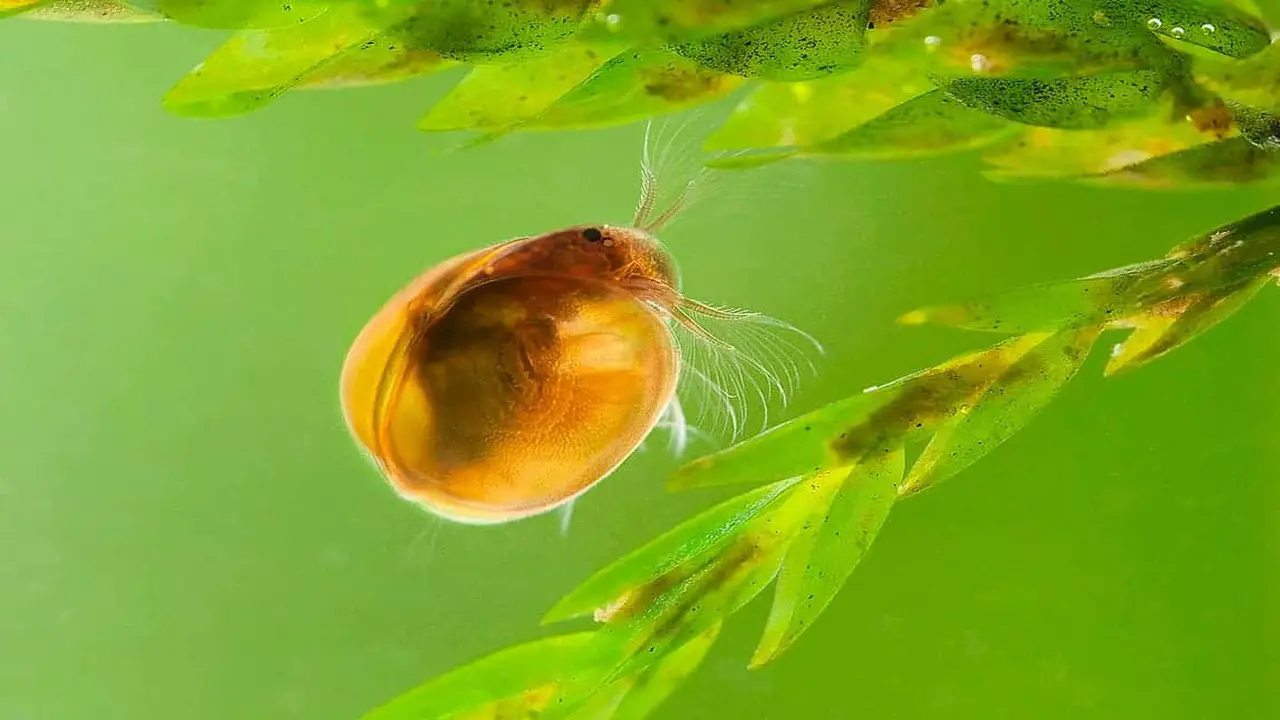
Regular maintenance and cleaning of the aquarium help prevent seed shrimp infestation. Avoiding overfeeding is crucial to avoid an increase in the seed shrimp population. Introducing natural predators like snails can effectively control the seed shrimp population.
Quarantining new plants or aquarium inhabitants is essential before introducing them to prevent the spread of seed shrimp. Keeping the water parameters stable and consistent also plays a significant role in preventing seed shrimp infestation. By implementing these preventive measures, you can ensure a healthy and pest-free aquarium environment.
Eradicating Seed Shrimp: Effective Methods
To eliminate seed shrimp effectively, several methods can be employed. One approach is using algaecides, which target the primary food source of the seed shrimp, algae. By reducing the availability of their main food source, algaecides can help control and eradicate seed shrimp populations.
Another effective method is to reduce the amount of food available in the aquarium. Avoid overfeeding, as excess food can lead to an increase in seed shrimp. Additionally, frequent water changes and maintaining a clean tank can prevent seed shrimp infestations.
Consistency in tank maintenance and monitoring will also aid in controlling and preventing seed shrimp outbreaks. Predatory fish and invertebrates can serve as natural enemies to seed shrimp, keeping their population in check. Thus, introducing these predator species into the aquarium can further assist in eradicating seed shrimp.
Using Predator Fish
Adding predator fish like bettas or guppies to your aquarium can be an excellent solution for controlling seed shrimp populations. However, it’s crucial to research the compatibility of these predator fish with other fish and plants in the tank to maintain a harmonious ecosystem.
Overfeeding your fish can inadvertently lead to an increase in the seed shrimp population, so be mindful of proper feeding practices. Incorporating live plants into the aquarium can help control seed shrimp by providing natural competition for resources. Remember to prioritize regular water changes and maintenance to ensure a healthy balance within your tank ecosystem.
The Role Of Vacuuming
Regular vacuuming is crucial for maintaining a healthy seed shrimp- aquarium. Removing excess waste and debris creates a clean and balanced environment for aquatic pets. Using a siphon vacuum allows you to extract water and eliminate accumulated waste simultaneously.
It’s important to strike the right balance with vacuuming – do it regularly but avoid excessive disturbance to the tank’s natural equilibrium. Vacuum the substrate thoroughly to eliminate hidden debris and excess food. This essential maintenance task is vital in promoting the well-being of your seed shrimp -aquarium.
Setting Up Shrimp Traps
Setting up a shrimp trap is crucial to maintaining optimal aquarium water quality. These traps can be easily made at home using common household items or purchased from stores. Place the trap in an area where the shrimp tend to congregate to increase its effectiveness.
Regularly checking and cleaning the trap is important to prevent it from getting clogged with debris, ensuring it functions properly. You can contribute to your aquarium’s healthy and balanced ecosystem by setting up a well-functioning shrimp trap.
Potential Risks To Plants From Seed Shrimp
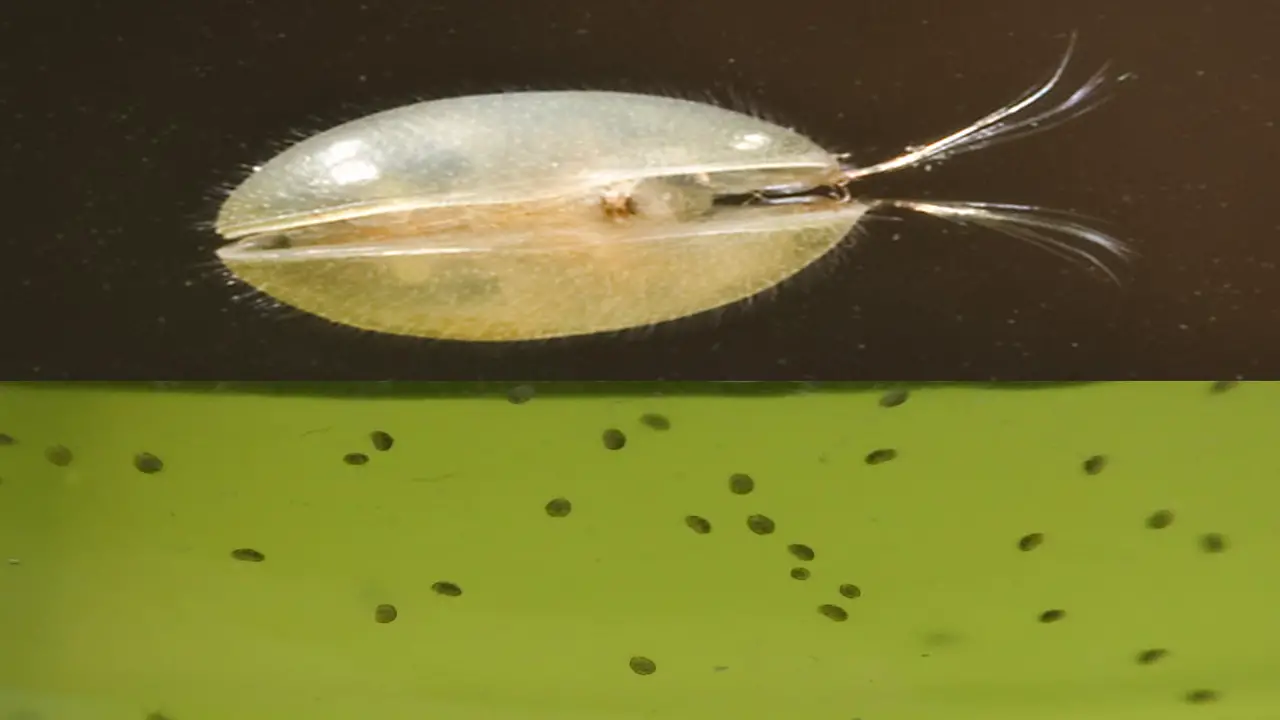
Knowing the potential risks that seed shrimp can pose to your aquarium plants is important. These tiny crustaceans tend to nibble on delicate plant leaves, causing damage and potentially stunting their growth. To protect your plants from seed shrimp, consider introducing snails or other shrimp species that feed on these pests.
Additionally, regularly monitoring your aquarium’s water parameters is essential to ensure that your plants are not experiencing stress due to seed shrimp activity. Proper filtration and regular water changes can also help keep seed shrimp populations in check and prevent overgrowth. Balancing the needs of your plants with the presence of seed shrimp is key to maintaining a healthy and thriving tank ecosystem.
How Does Seed Shrimp Impact Other Aquatic Life?
Seed shrimp have the potential to both positively and negatively impact aquatic life in their ecosystem. On the one hand, they can serve as a crucial food source for small fish and insects. However, if their numbers grow too large, they can begin to compete with other species for resources like food and oxygen, which can upset the balance of an aquarium ecosystem.
Therefore, properly monitoring and managing seed shrimp populations are essential to maintaining a healthy balance in an aquatic environment. Additionally, controlling factors such as water quality and temperature can help prevent overpopulation and ensure the survival of all species in the ecosystem.
Are Seed Shrimp Harmful To Their Predators?
While seed shrimp may seem insignificant, but vital in sustaining aquatic ecosystems. As they are too small to cause harm, they are generally not harmful to their predators and can even provide a good source of protein for larger aquatic animals.
Predatory fish and invertebrates often seek them out as part of their diet, contributing to a balanced food chain. In addition to being a food source, seed shrimp help regulate nutrient cycles in aquatic environments by consuming excess organic matter. Overall, these tiny creatures have an important impact on the health and stability of aquatic ecosystems.
Conclusion
Maintaining a healthy seed shrimp aquarium requires understanding their natural habitat, life cycle, and dietary needs. Proper conditions and food sources are crucial to preventing infestations and thriving your aquarium. However, if you encounter a seed shrimp infestation, effective methods to eradicate them include using predator fish, vacuuming, and setting up shrimp traps.
It is also important to note that seed shrimp can pose potential risks to plants, other aquatic life, and their predators. Therefore, it is essential to take preventive measures like regularly cleaning the tank and avoiding overfeeding. With proper care and attention to detail, you can master the art of maintaining a successful seed shrimp -aquarium that will provide you and your aquatic pets with hours of enjoyment.
Frequently Asked Questions
What Does Seed Shrimp Do?
Seed shrimp, small crustaceans found in aquariums, play a crucial role in maintaining a healthy ecosystem. They clean up excess food and waste, serving as nature’s cleanup crew. Additionally, they serve as a food source for larger aquatic organisms. To ensure their well-being, it’s important to maintain proper water conditions.
What Are The Signs Of A Seed Shrimp Infestation In An Aquarium?
Signs of a seed shrimp infestation in an aquarium include the presence of small, white or greyish creatures swimming around, excessive debris or waste buildup, damage to plants, and fish eggs being eaten. Regular cleaning and maintenance can help prevent and control these infestations.
Where Do Seed Shrimp Come From?
Seed shrimp, a freshwater crustacean, can be found in ponds, rivers, and streams worldwide. Some species of seed shrimp can even survive in extreme environments such as hot springs or polar regions. They are often introduced into aquariums as a natural food source for fish and other aquatic creatures.
What Is The Best Seed Shrimp Trap?
Simplicity and effectiveness are key in trapping seed shrimp in your aquarium. One option is to create a DIY trap using a plastic bottle with bait inside. Alternatively, commercially available traps like the Eon Luxe Catchmaster can do the trick. Just remember to regularly check the trap to prevent overcrowding and maintain the overall health of your aquarium.
Are Seed Shrimp Good For A Shrimp Tank?
Seed shrimp can benefit a shrimp tank ecosystem by breaking down waste and providing additional food sources for shrimp. However, excessive populations can compete with shrimp for resources. It’s important to monitor and regulate the seed shrimp population in the tank.

Aquarium passion is all about connecting with the aquatic life and providing education to the public on the importance of these creatures. We showcase a wide variety of marine life through our exhibits as well as working with schools to provide unique learning opportunities for students of all ages.

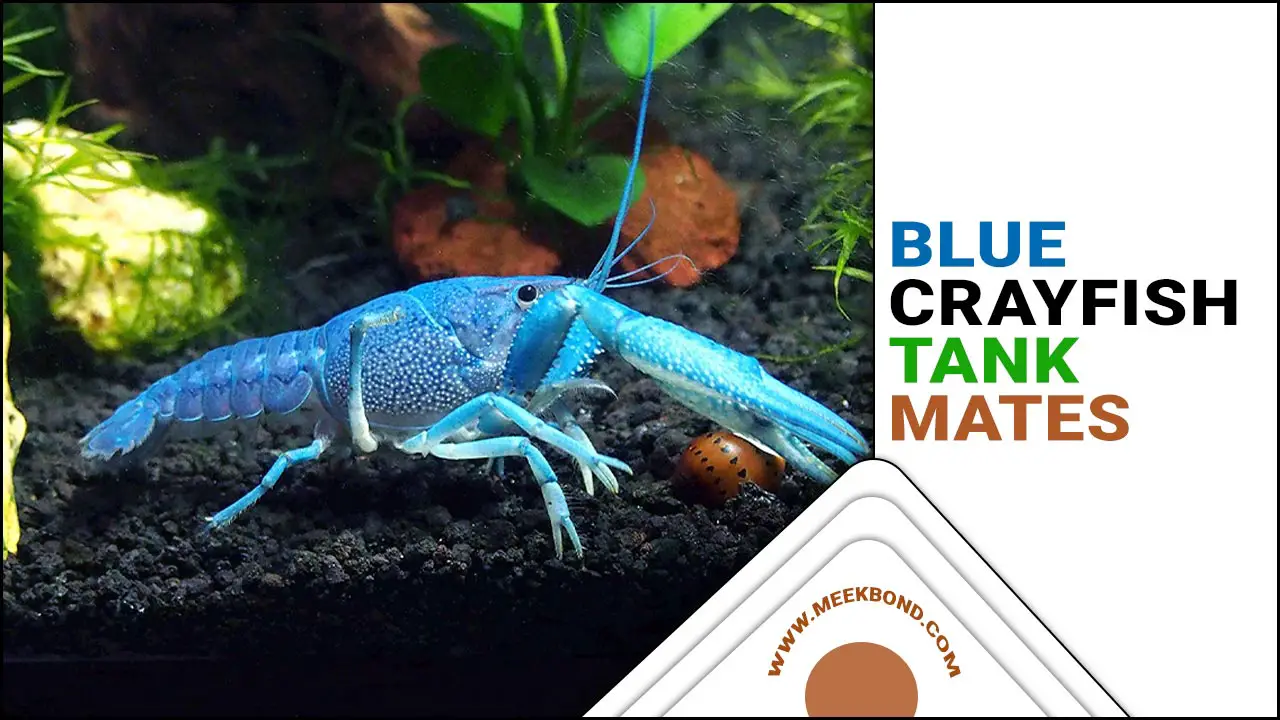
![How To Clean Aquarium After Fish Died [A Complete Guideline]](https://meekbond.com/wp-content/uploads/2022/11/How-To-Clean-Aquarium-After-Fish-Died.jpg)
